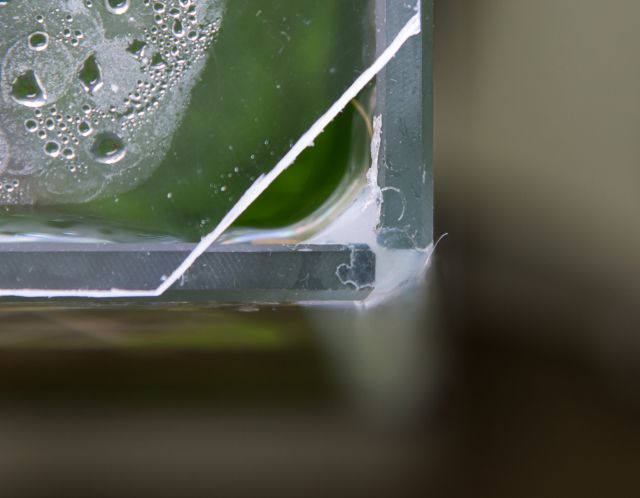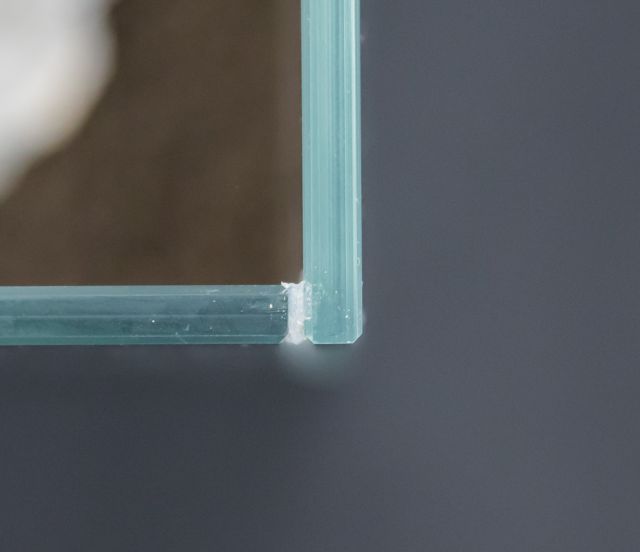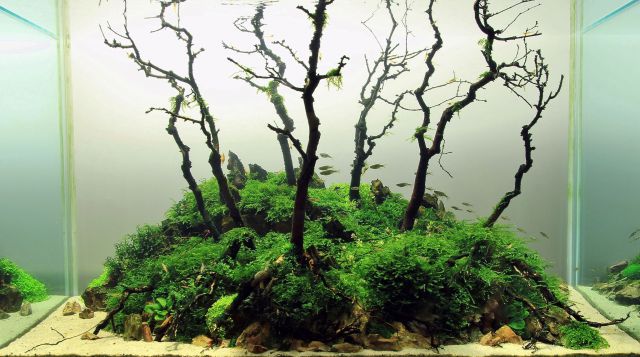In aquarium construction, two different methods are commonly applied when glass panes are glued together with silicone: bead bonding and butt bonding. We’ll show you the differences between the two.
Bead bonding

This type of silicone seam has long been favored in the past in aquarium construction, especially in the production of larger tanks. When the bead bonding method is used, the glass panes have no contact with each other. There are gaps between the panes, which are filled up with silicone. Compared to butt bonding, bead bonding requires significantly more silicone, which usually translates into a higher overall price for the aquarium.
If this method is used in aquarium construction, the higher material usage also means that you can see a lot more silicone, both inside and outside the aquarium. Due to the nature of this building method, the seams are rather wide and thick. Unfortunately, especially when transparent silicone is used, there is the problem of increased algae formation on the large silicone surface inside the aquarium. The surface finish of silicone is slightly rougher than that of glass, which favors the formation of algae films. This type of bonding is quite difficult to keep clean and algae-free.
Butt bonding

This aquarium building method has pretty much established itself as a modern standard. In butt bonding, the contact surface of glass and silicone is significantly larger. The stability of this silicone seam is much higher compared to bead bonding, and therefore many aquarium manufacturers offer this type of silicone seam even for large aquariums.
Butt bonding is certified according to the German Industry Standard DIN. This is important if, for example, you want to take out a glass insurance, as this type of bonding is approved by most insurance providers.
In production, when the panes are pressed against each other, lateral silicone beads are produced. Glass basins look particularly elegant when the beads are sliced off cleanly both on the outside and inside. In this way, almost no silicone can be seen in the aquarium and hardly any bothersome algae can form on it.

Thick silicone beads are clearly visible on the inside seam of the aquarium. They are difficult to keep free from algae.
Colour
While in the past black silicone, on which algae films remain more or less invisible, was used as the standard color, nowadays mostly transparent silicone is used for the butt joint with scraped-off beads. This results in a much more elegant look. Modern tanks such as the Cube Garden by ADA or Dennerle Scaper's Tanks are manufactured this way.
However, there are also striking differences in the glass material used in aquarium building. We cover the different glass types in our wiki article called "Float glass or low-iron glass?" in detail.